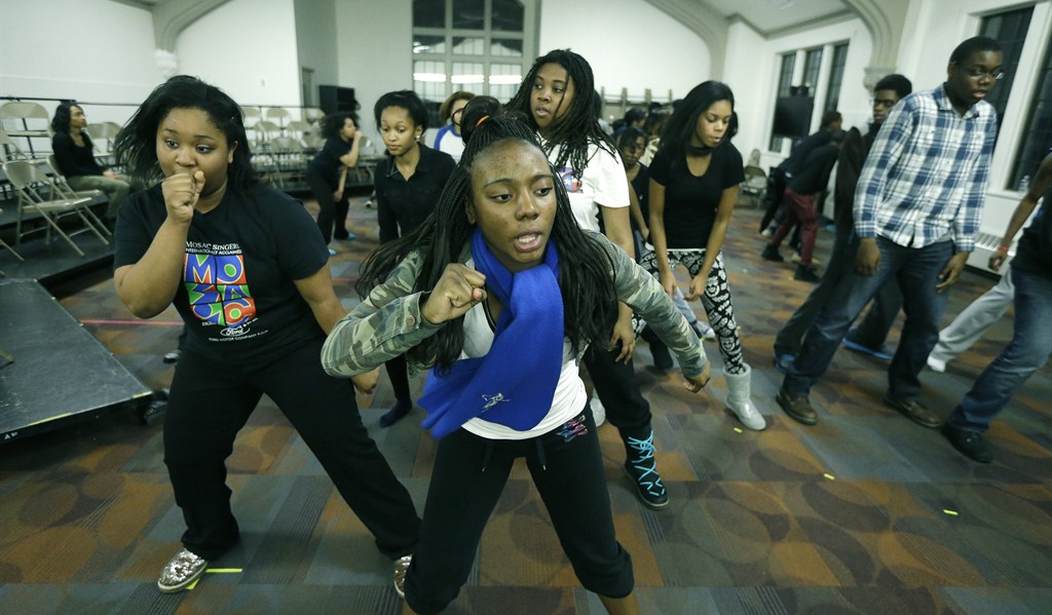Have you seen a modern social studies textbook used in classrooms? If you’re older than 30, you might not recognize them. They have become so banal and boring it’s actually more important to list what they aren’t covering.
I will be the first to admit that “history” textbooks, as we called them in ancient times, left out a lot history — a history that was important to some racial and ethnic groups. Women barely existed. Blacks — except for George Washington Carver — were invisible.
The problem then and now are time and space. Teachers have a limited amount of time to spend on history, and textbook companies have limited space to provide anything close to an accurate representation of what happened in the past.
So the textbook companies compromise and give a little to everyone. The resulting mishmash doesn’t please teachers, students, or activists who see every omission as “evidence” of “racism” or “sexism,” or “anti-Americanism.”
No one argues that history textbooks of the past didn’t give short shrift to blacks and women while portraying Native Americans in an unrealistic, even insulting light. But current social studies textbooks, in their zeal to be “inclusive,” gloss over or gives short shrift to many events that you or I would be startled to learn aren’t included.
Perhaps part of the problem is the way schools approach classwork.
Textbook choice for teachers has in recent decades shrunk to almost nothing. Text-light picture books and easy readers are now almost universal; content distinctions between books are minor, and at the K-6 level, almost indistinguishable. The wide-scale shift in elementary schools to whiteboard learning and other computer-based instruction makes the standard textbook one of many media in many classrooms, not the center of teaching and learning. In high schools projects and activities frequently substitute for reading and memorization. The challenge to literacy and serious historical thought is obvious.
In roughly the last five years, since 2010, the three remaining major K-12 publishers – Pearson, McGraw-Hill, and Houghton Mifflin Harcourt – have re-branded and scrambled earlier products. Odious new instructional materials, notably Teachers Curriculum Institute materials (TCI) have gained classroom prominence, indicating the trend toward less demanding, more progressive, multicultural classroom products favored among teachers. Compounding the problem, state textbook adoptions have lost their force.
The “more progressive” classroom products erase large swaths of history that would alter perceptions of the United States that has been popularized in schools from K-12.
“The curriculum was never designed to be anything other than white supremacist,” Julian Hayter, a historian and an associate professor at the University of Richmond in Virginia, said, “and it has been very difficult to convince people that other versions of history are not only worth telling. They’re absolutely essential for us as a country to move closer to something that might reflect reconciliation but even more importantly, the truth.”
Whose “truth”? What Professor Hayter is saying ludicrous. The “truth” in history is an amalgam of names, places, dates, and events. It used to be that historians sought to “make sense” of this mess by placing things in a nice, neat, linear order — so-called “narrative history.” It made for great reading but not much understanding.
Then, along came Howard Zinn and other social historians like Page Smith who believed the story of America could best be told through the eyes of ordinary people. Again, fascinating stuff but hardly instructive.
The study of history is best seen not as a logical progression of events but as trying to understand the forces that moved those people, impacted those events. It’s less interesting to read but probably gives a more “accurate” view of what happened.
None of this is relevant to students struggling with boring textbooks listening to even more boring teachers. But is it “white supremacy”? Or “systemic racism”?
King said the experiences and oppression of Black people, Latino people, indigenous people, Asian people and other minority groups in the U.S. are largely ignored or sidelined to fit those narratives.
“So, of course you’re not going to have crucial information such as what happened in Tulsa, you’re not going to have information such as the bombing of a Philadelphia black neighborhood,” he said.
I remember when the film Amistad came out and everyone expressed amazement that this mutiny on a slave ship wasn’t widely covered in classrooms. One black historian appeared on C-SPAN at the time and quietly pointed out that American history is not locked in a closet, guarded 24 hours a day by CIA agents. It’s everywhere, not just in textbooks. It’s in libraries. It’s in bookstores. It’s on your grandmother’s bookshelf. If you wait to read about it in a classroom textbook, you will wait a very long time.
Teachers used to try and inculcate that sort of desire for learning in students beyond the classroom. I guess today if it’s not “approved” by the school board, it shouldn’t be learned.










Join the conversation as a VIP Member